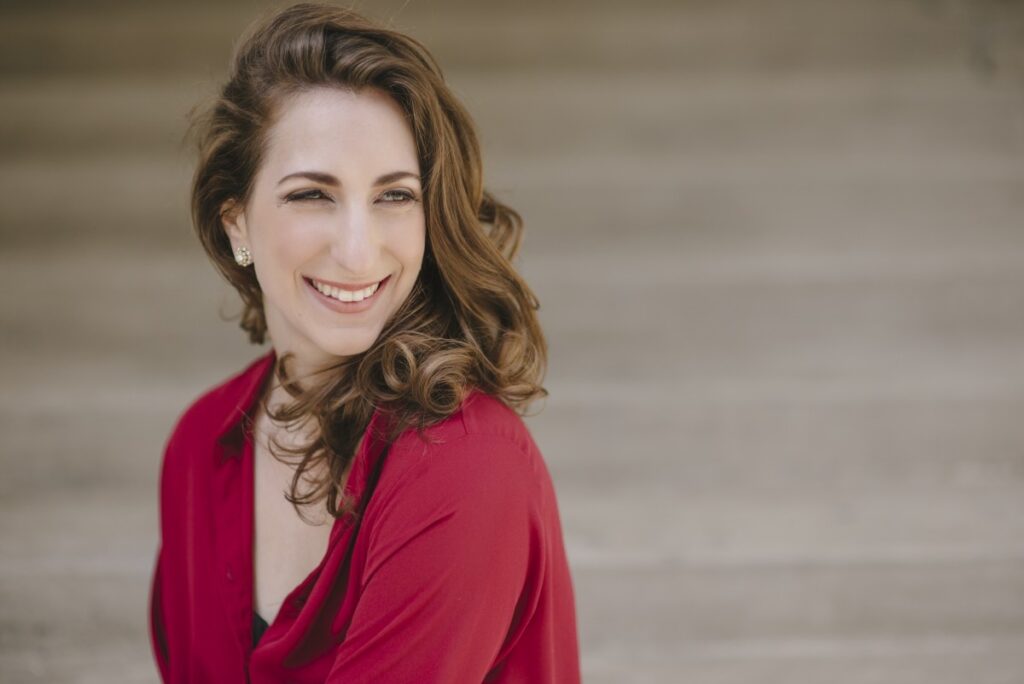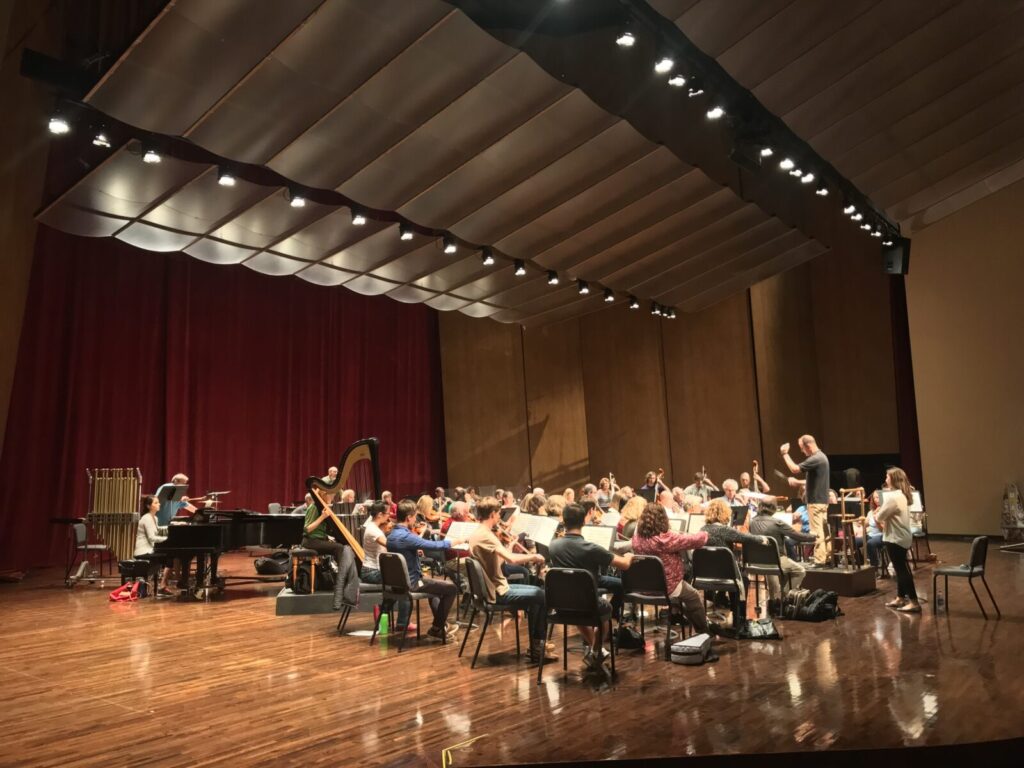Live performance in any genre is a daunting challenge; for music, it may be particularly so, given the small idiosyncrasies of a hundred different categories that can produce massive differences in the audio quality of a performance. In their latest concert, titled Simplicity, the Lexington Philharmonic demonstrated their dedication to their craft, a dedication that is substantially devoted to executing each moment of music so precisely that small idiosyncrasies are banished from the concert hall. The result was an enjoyable, if not ecstatic, evening of music.
Maestro Scott Terrell made the somewhat unorthodox decision to start the evening with Beethoven’s Fourth Symphony (Beethoven is usually held in reserve for the final piece of most concerts, the idea being that the audience will be suitably wowed by the greatest of the composers just as they leave). Terrell, in his pre-concert talkback, noted that the Fourth Symphony is often overlooked, sandwiched as it is between the legendary Third and Fifth Symphonies (the Third being the Eroica, and the Fifth–well, the Fifth has that opening theme, “da-da-da-dum”). Terrell notes that it shows off a lighter side of Beethoven the composer.
As the symphony went on, I found myself focusing on individual performers: the violinist with a bright blue chin cloth, contrasting with the black and white uniform of the orchestra. There was the timpanist, highlighted standing against a deep red rear curtain. I noticed a violinist whose feet never touched the ground when she played. I was drawn back to the characteristic touch of the maestro, who likes to accentuate big strings hits with a magisterial point down in his left hand, arm fully extended like a steel beam, tilted forty-five degrees towards the floor from the shoulder.
There were without question some excellent moments throughout the performance. The moody opening, a low and rumbling B flat that left me looking around the stage in some wonder and not a little bit of anxiety. Immediately following was the first violin entrance, where the high strings give a direction and a sense of purpose to the moody ambiance. Towards the middle of the piece, the orchestra dropped away for the entrance of a solo clarinet, presaged by a rolling horn that stops and sustains a note; the clarinet entered on the same note, and the horn faded away, leaving a woody sound, in turn giving way to a clarinet melody floated over pizzicato strings towards the ears of the audience.
My favorite flourish, though, was an exchange between the violins and the timpani. The strings marked out a quick one-two pattern, answered by the timpani, uncharacteristically for the instrument but delightful nonetheless, rattling and rasping a reply.
Though less performed, the Fourth is certainly Beethoven, wide-ranging and expressive, and at times lyrical; Terrell is right that this is a lighter Beethoven than the brooding image conveyed by the Fifth Symphony or Appassionata Piano Sonata. The Philharmonic was finely tuned and gave a demonstration of the craft that’s required to even attempt a major symphony. But for this performance, though professional and enjoyable, the Philharmonic didn’t quite break above the clouds and reach the mountainous peaks of the truly memorable.
Following a brief intermission, the Philharmonic returned with their soloist for the evening. Mezzo-soprano Sofia Selowsky, a young and upcoming talent in the opera world, was to give her premiere performance of a modern American work, Dominick Argento’s song cycle Casa Guidi.

Argento, who spent a good deal of time in Florence, where Elizabeth Barrett Browning spent most of her married life, wrote this song cycle to express his deep connection to the city, and to the poet.
The composer, now 90, explained this connection to Maestro Terrell in an email, excerpts of which Terrel, in turn, read to the audience before the performance. Argento, whom Terrell calls “extremely sincere in his music-making,” taught Terrell, and the two were later colleagues at the Minnesota Orchestra.
Maestro Terrell chose Ms. Selowsky, a “consummate artist,” in his view, to perform with the Lexington Philharmonic after working with her at the Aspen festival.
Ms. Selowsky is obviously a dedicated professional as well as an empathetic artist. Speaking of Argento’s composing technique, she was quick to note that the music “fits the voice and fits the language in a really beautiful way.” She has an obvious affection for the piece, despite the fact that she had only recently learned it.
Ms. Selowsky, unfortunately, struggled somewhat in working with the orchestra. Throughout the cycle, but in the first two songs especially, the orchestra tended to overwhelm her voice. This made the whole form of the piece somewhat indistinct.
The third movement, however, with a quieter orchestra, permitted Selowsky to shine. She had a clear affinity for the quieter moments in the piece; as she told me in a pre-concert interview, the quality that drew her to this piece is that “the poetry is so intimate, even when you have a whole orchestra behind you.”
That expressive feeling eventually came through, as Ms. Selowsky leaned on some clearly well-developed dramatic chops, as well as an open and clear mezzo voice.
The fourth song was expressive and moving— a high and scratchy scoring in the violins lent a haunting and disquieting air about it, appropriate to a text that dealt with the pain of Barrett Browning’s estrangement from her father.
Sadly, the fifth and final song suffered from the same balance problem as the first two songs— when the orchestra shone, it easily eclipsed the soloist, whose voice couldn’t soar over the instrumentalists.

After a mixed performance of a modern piece, the concert ended on its strongest note, with a delectable performance of the Prokofiev Classical Symphony. The Philharmonic delivered it like a cupcake: perfectly fun, light and airy, with lots of sugary frosting on the top. Prokofiev has written some challenging and complex music— his Classical Symphony is neither. An example: the end of the third movement includes a cheeky button that elicited a soft chuckle from the audience. Prokofiev wrote a straightforward homage to the by-then bygone era of Haydn and Mozart, and it demands a disciplined touch to create the pleasant effect.
The Philharmonic’s craft and clarity of playing were remarkably well-served by the final piece. The opening movement was a light romp, a perfect palate-cleanser to start off the final piece of the evening. The slow second movement was a chance for the orchestra to display its lyricism and soulful spirit, and an easygoing melodious feeling filled the hall. A gavotte, a kind of moderately quick two-step, gradually turned up the heat in the third movement. With a breakneck dash to the finish line in the fourth movement, resting almost entirely on the nonstop violins, the Philharmonic finished the evening with a lovely send off for the audience.
The evening was not an unequivocal triumph. Throughout the performance, however, the Philharmonic played with a consistently high standard of quality, and there were plenty of moments where every element congealed into a flash of euphoria.
Even with its flaws, the Philharmonic remains an excellent orchestra always worth a listen.




